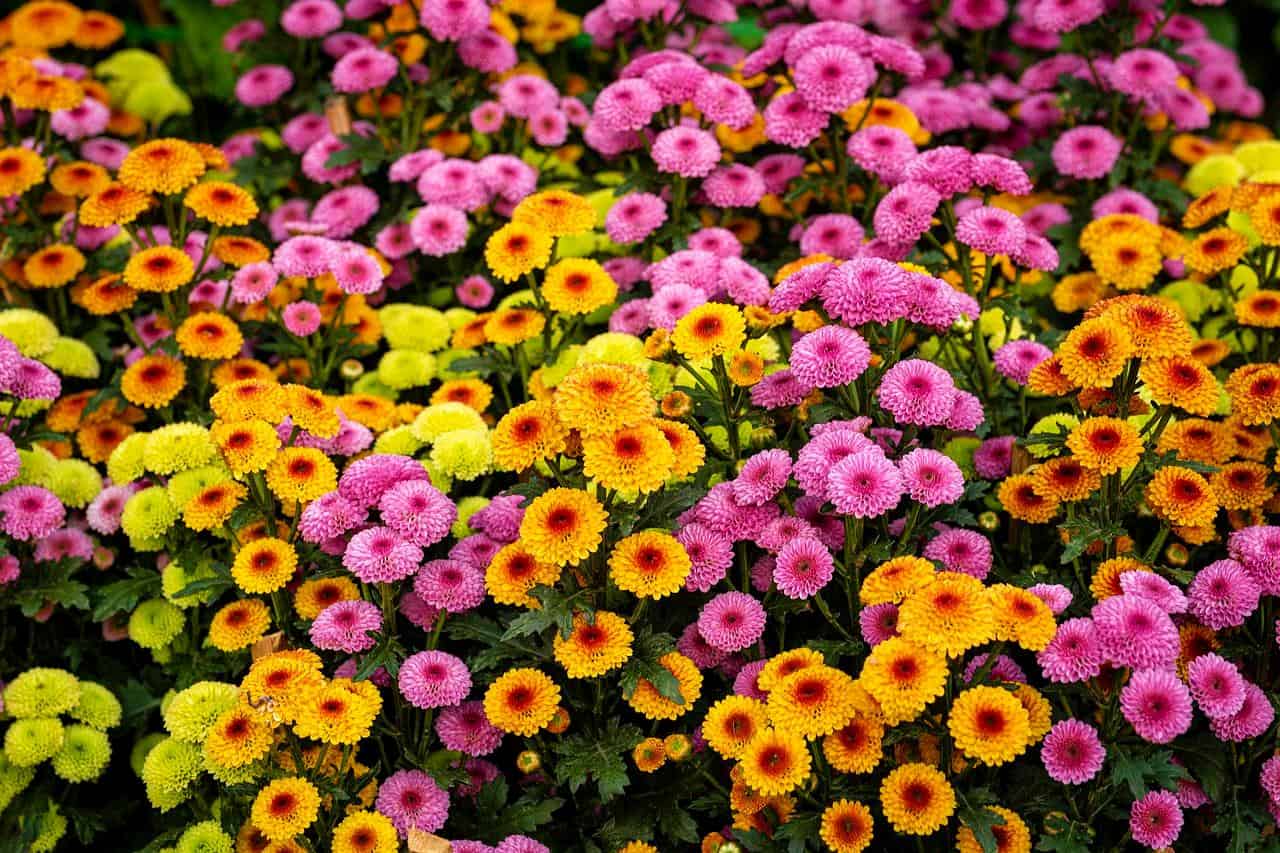As the summer heat fades and the crisp, cool air of autumn arrives, one of the most vibrant and long-lasting flowers that graces our gardens is the humble chrysanthemum, or “mum” as they are affectionately known. These hardy perennials are prized for their ability to burst into a riot of color just as other plants are winding down for the year.
However, keeping mums blooming throughout the entire fall season takes a bit of care and attention. In this blog post, we’ll explore key tips to ensure your mums stay lush, full, and covered in blooms from the first days of autumn all the way through Thanksgiving.
Buy Plants with Tight Buds
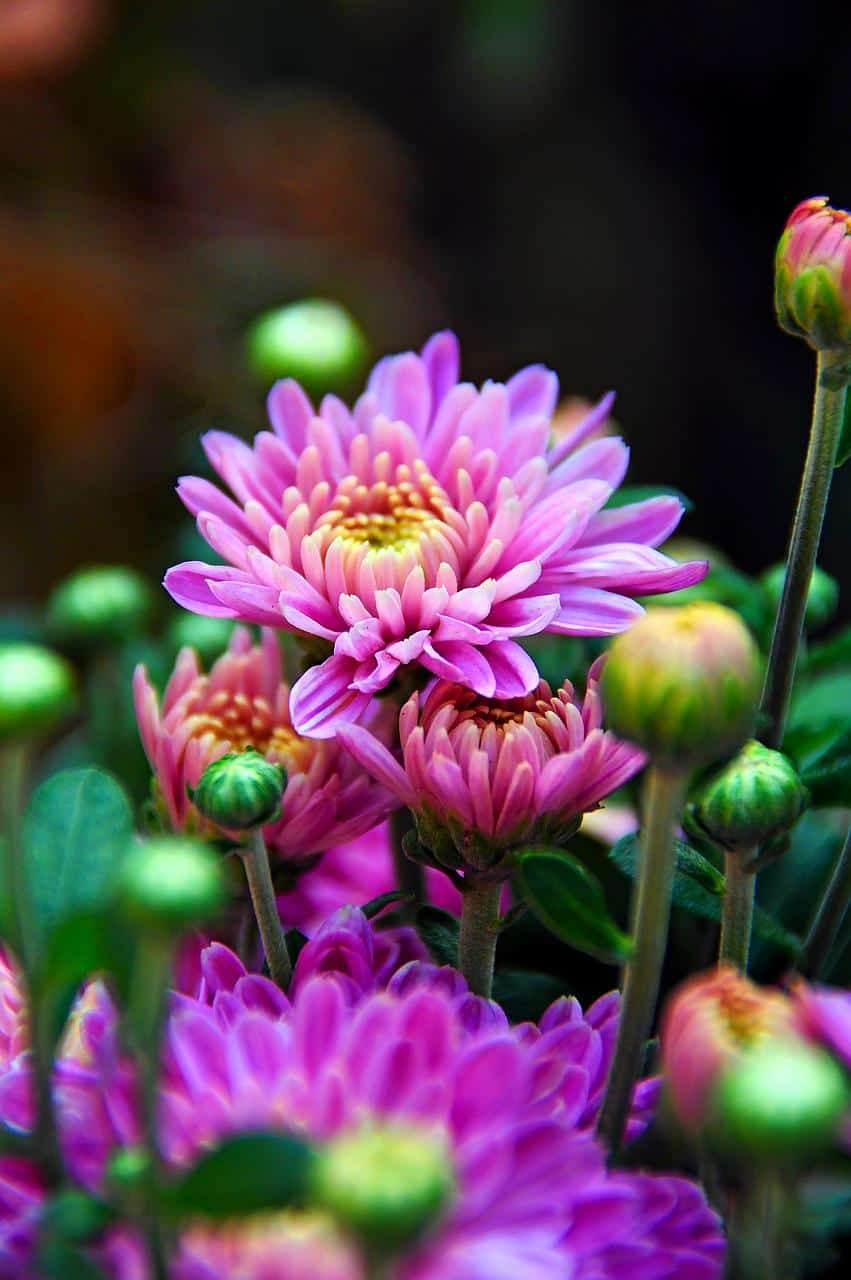
The first step to getting the most out of your mums is to start with the right plants. When selecting mums at your local nursery or garden center, look for plants that have tight, compact buds rather than those that are already in full bloom.
Mums that are sold with open flowers may seem like they’ll provide instant gratification, but these plants have already expended a lot of their energy and won’t last nearly as long as those with tightly closed buds. The closed buds indicate that the plant still has plenty of blooming potential left to give you weeks of vibrant color.
Additionally, choose mums that have a full, bushy appearance with no gaps in the foliage. Avoid any plants that look leggy or sparse, as these are less likely to develop into a robust, floriferous display.
Fertilize Regularly
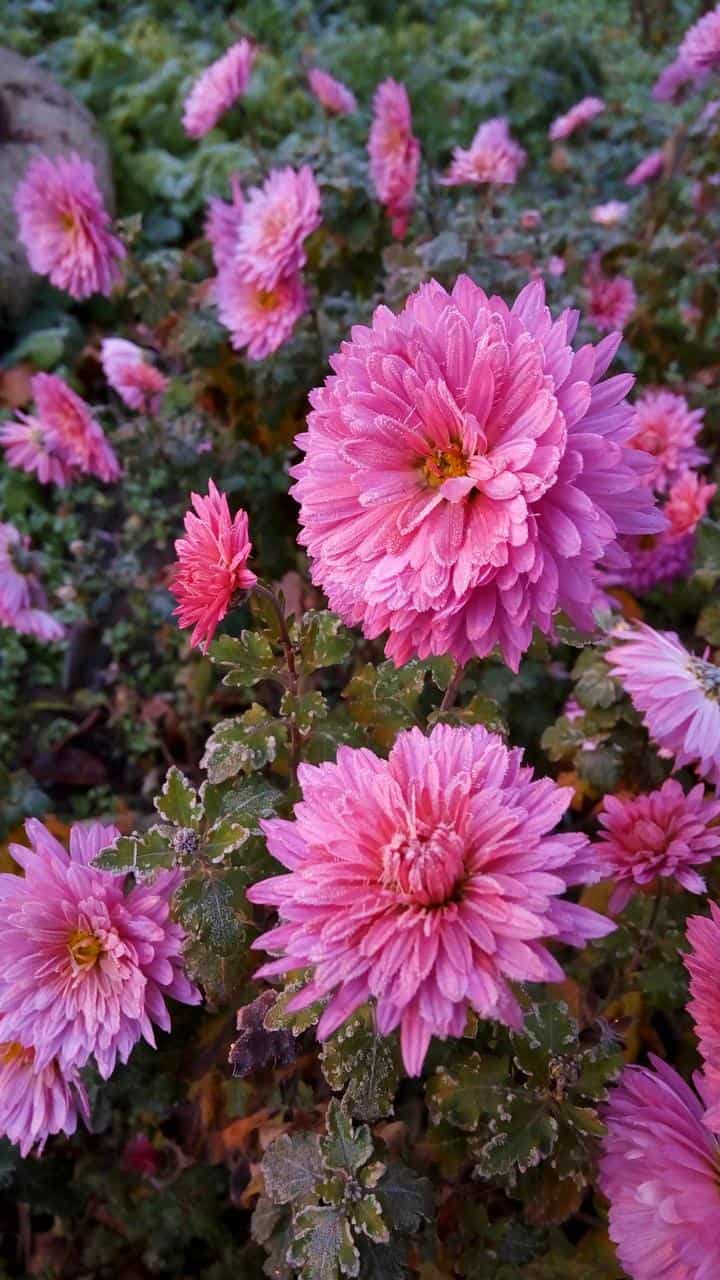
To keep your mums blooming their best all season long, it’s essential to provide them with proper nutrition through regular fertilization. Mums are heavy feeders that require a steady supply of nutrients to fuel their prolific flowering.
Begin fertilizing your mums about a month after planting them in the garden. Use a balanced, water-soluble fertilizer and apply it every two weeks according to the product instructions. This steady diet of nutrients will encourage your mums to produce wave after wave of blooms.
If you notice the leaves starting to yellow or the plant’s growth slowing down, that’s a sign it’s time to give your mums a boost with some additional fertilizer. Just be sure not to over-fertilize, as this can lead to lush foliage at the expense of flower production.
Place in Full Sun
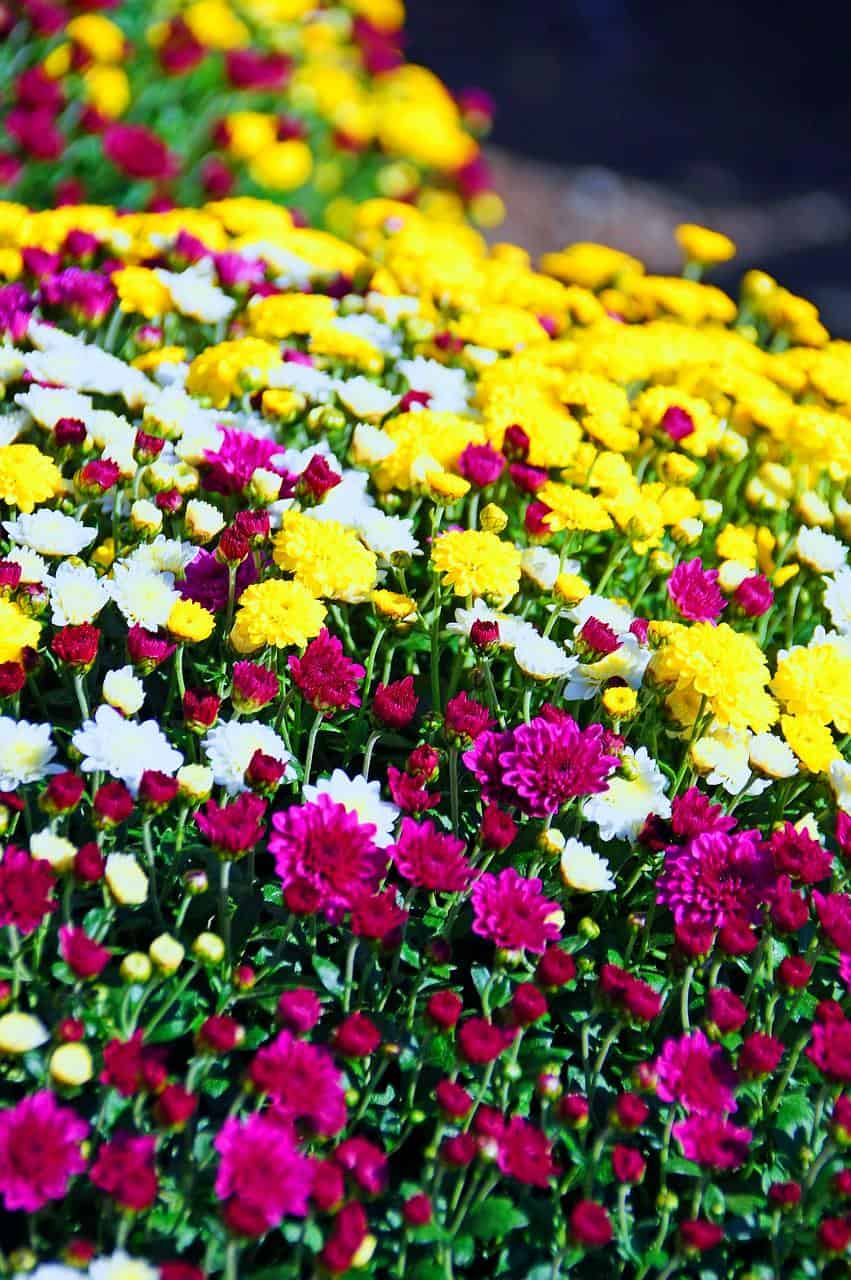
Mums are sun-worshippers and require at least six hours of direct sunlight per day to thrive. When planting your mums, choose a spot in the garden that gets full sun exposure from morning until evening.
Mums that don’t receive enough sunlight will become leggy and produce fewer flowers. They may also be more susceptible to disease issues like powdery mildew. Ensure your mums are planted in an open, sunny area away from tall plants or structures that could cast shade on them.
If you live in a region with very hot afternoon sun, you may want to provide some light afternoon shade to prevent the leaves from wilting. But overall, the more sun your mums get, the better they’ll perform.
Water Regularly
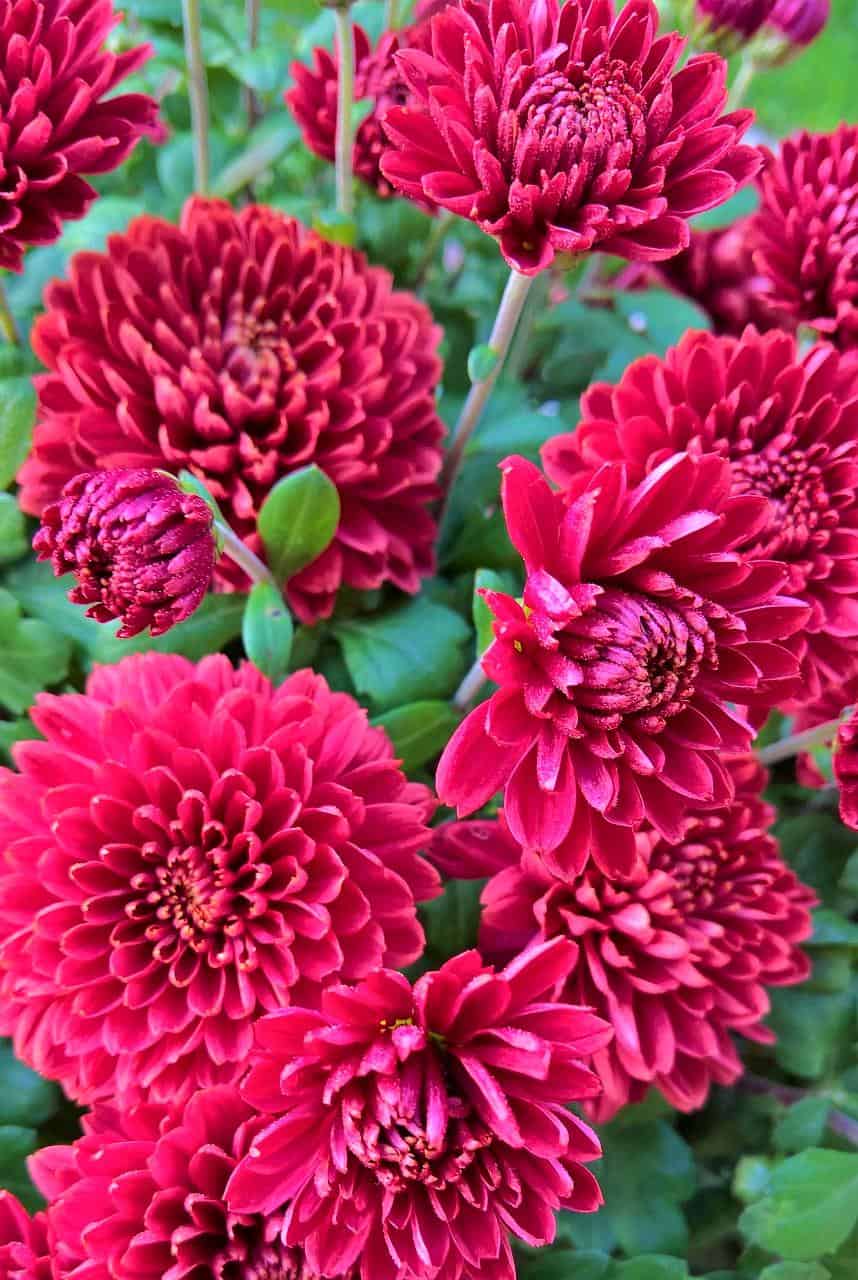
In addition to sunlight and fertilizer, proper watering is crucial for keeping mums in peak blooming condition all season long. Mums have shallow root systems that require consistently moist, but not waterlogged, soil.
During the hot, dry days of early fall, you may need to water your mums every 2-3 days to prevent the soil from drying out completely. Apply water slowly and deeply, making sure it reaches the plant’s roots. Avoid getting water on the foliage, as this can promote fungal diseases.
As the weather cools later in the fall, you can reduce watering frequency to about once a week, as the soil will retain moisture better. But always be sure to check the soil before watering – if it’s still damp an inch or two down, hold off on additional irrigation.
Proper watering will keep your mums looking lush and vibrant, with no wilting or drooping leaves. Neglecting to water them consistently is one of the most common reasons mums fail to thrive.
Prune Early to Encourage Branching

To get the fullest, most floriferous mum plants, it’s important to prune them early in the growing season. This helps stimulate lateral branching, resulting in more flower buds and a bushier, more compact habit.
The best time to prune mums is in late spring or early summer, when the plants are about 6-8 inches tall. Use clean, sharp pruners to snip off the top 2-3 inches of each stem. This will prompt the plant to send out multiple new side shoots, creating a fuller, more robust structure.
Avoid pruning mums too late in the season, as this can delay or reduce their fall bloom time. Aim to complete any necessary pruning by mid-summer at the latest.
Repot

Repot Mums Periodically If you’re growing your mums in containers, it’s important to repot them every 2-3 years to provide fresh, nutrient-rich soil and prevent the plants from becoming rootbound.
The best time to repot mums is in early spring, before new growth emerges. Gently remove the plant from its current pot, loosen any tangled or circling roots, and replant it in a container 2-3 inches wider than the previous one. Use a high-quality potting mix amended with compost or other organic matter.
Repotting gives the mum’s roots room to spread out and access the nutrients they need to fuel abundant blooms. It also helps prevent the plant from becoming pot-bound, which can stunt growth and reduce flowering.
If you’re growing mums in the ground, you can skip the repotting step. But be sure to work some compost or other organic matter into the soil around the plant’s base each spring to reinvigorate the soil.
Remove Weeds

Keeping your mum plants free of weeds is an important, yet often overlooked, step in maintaining their health and prolonged bloom time. Weeds can compete with mums for essential nutrients and moisture in the soil, robbing the plants of the resources they need to thrive.
Be diligent about removing any weeds that pop up around your mum plants, pulling them out by the roots as soon as you spot them. This is especially important in the early stages of growth, when the mums are still establishing themselves.
As the mums mature and fill out, they’ll naturally crowd out many weeds. But it’s still a good idea to do periodic weeding checks, especially after heavy rains or watering, to ensure no opportunistic interlopers are encroaching on your mums’ territory.
Deadhead Regularly

Deadheading, or the removal of spent flowers, is a crucial maintenance task for keeping mums blooming all season long. As the individual flowers on each mum plant fade, it’s important to snip them off promptly.
This serves two important purposes:
It prevents the plant from putting energy into producing seeds, which would signal the end of its blooming cycle. Instead, the mum will redirect that energy into producing new flowers.
It keeps the plant looking tidy and attractive, removing any unsightly brown or withered blooms.
Use clean, sharp pruners or scissors to deadhead mums, snipping the flower stems just above the nearest set of leaves. Be sure to remove the entire flower head, not just the petals. Deadhead your mums every 1-2 weeks to maximize their rebloom potential.
Protect the Roots
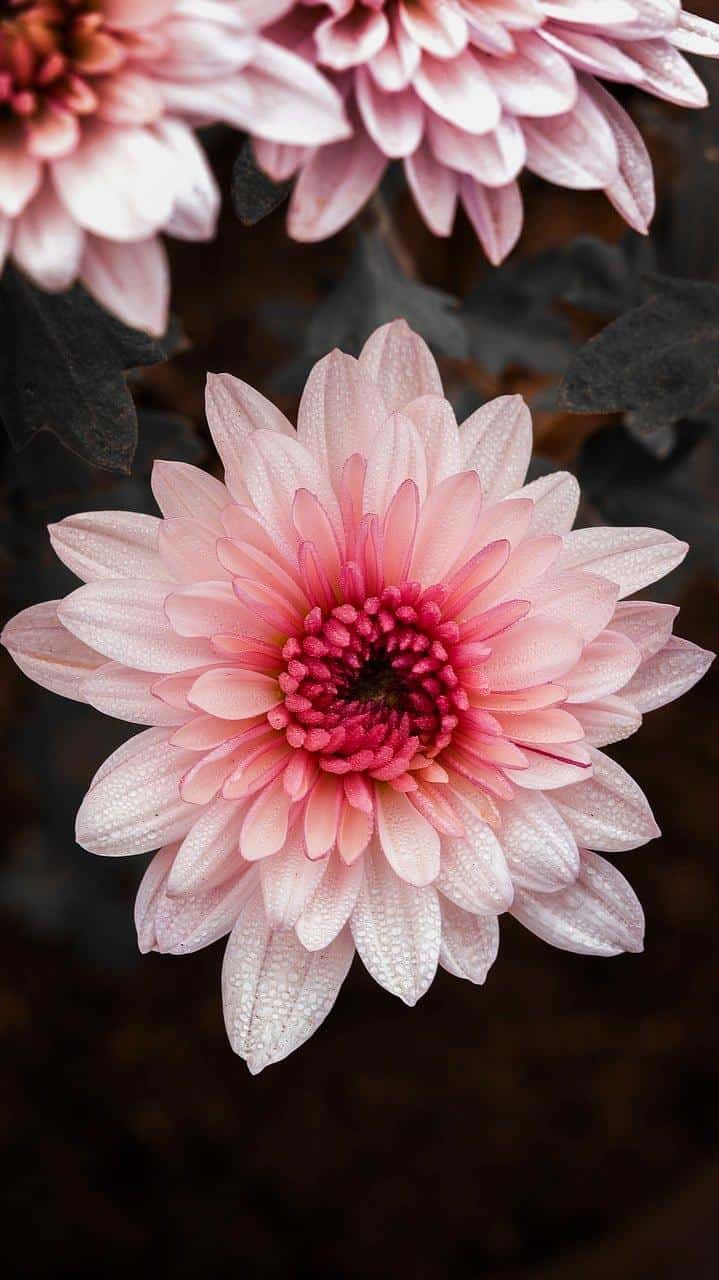
Mums have relatively shallow root systems that can be vulnerable to damage, especially as the weather cools in the fall. Taking steps to protect the roots is an important part of keeping your mums healthy and blooming.
One way to do this is by applying a 2-3 inch layer of mulch around the base of the plants. Shredded bark, wood chips, or even fallen leaves make excellent mulch options. The mulch will insulate the roots from temperature extremes and help the soil retain moisture.
You can also consider covering the root zone with a thick layer of leaves or straw once the first frost arrives. This “blanket” will shield the roots from freezing temperatures and harsh winter winds.
If you’re growing mums in containers, be sure to move the pots to a sheltered spot, such as against a south-facing wall, once nighttime lows start dipping below freezing. This will prevent the roots from becoming damaged by the cold.
FAQ
Q: How can I get my mums to rebloom after the initial flush of flowers?
A: To encourage reblooming, be sure to deadhead spent flowers regularly and continue feeding your mums with a balanced liquid fertilizer every 2-3 weeks. Providing ample sunlight and consistent soil moisture are also key. With the right care, many mum varieties will produce multiple waves of blooms throughout the fall.
Q: My mums are getting leggy and sparse-looking. What can I do?
A: If your mums are becoming leggy and open in their growth habit, it’s likely they aren’t getting enough sunlight. Make sure to plant them in a spot that receives at least 6 hours of direct sun per day. You can also try pinching or pruning the plants in early summer to encourage a more compact, bushy shape.
Q: When is the best time to plant mums for fall blooms?
A: The ideal time to plant mums is in the spring, around April or May. This gives them plenty of time to establish strong root systems and develop flower buds before the fall bloom season. You can also find mums for sale at garden centers in late summer/early fall, but these may not perform as well as spring-planted ones.
Q: How long will mums typically bloom for?
A: With proper care, mums can continue blooming for 6-8 weeks in the fall, from September through November in most climates. The exact bloom time will depend on the variety, your local weather conditions, and how well you maintain the plants. Deadheading and fertilizing regularly will help extend the flowering period.
Final Thoughts
Mums are undoubtedly one of the most beloved and long-lasting flowers of the autumn season. By following the tips outlined in this guide – selecting the right plants, providing ample nutrition and sunlight, proper watering and pruning, and protecting the roots – you can ensure your mums stay lush, vibrant, and covered in blooms from the first crisp days of fall all the way through Thanksgiving.
With a little extra care and attention, you can enjoy the cheerful, colorful display of mums in your garden for months on end. So get out there, put these strategies to work, and get ready to bask in the glory of mums that just keep on blooming.


